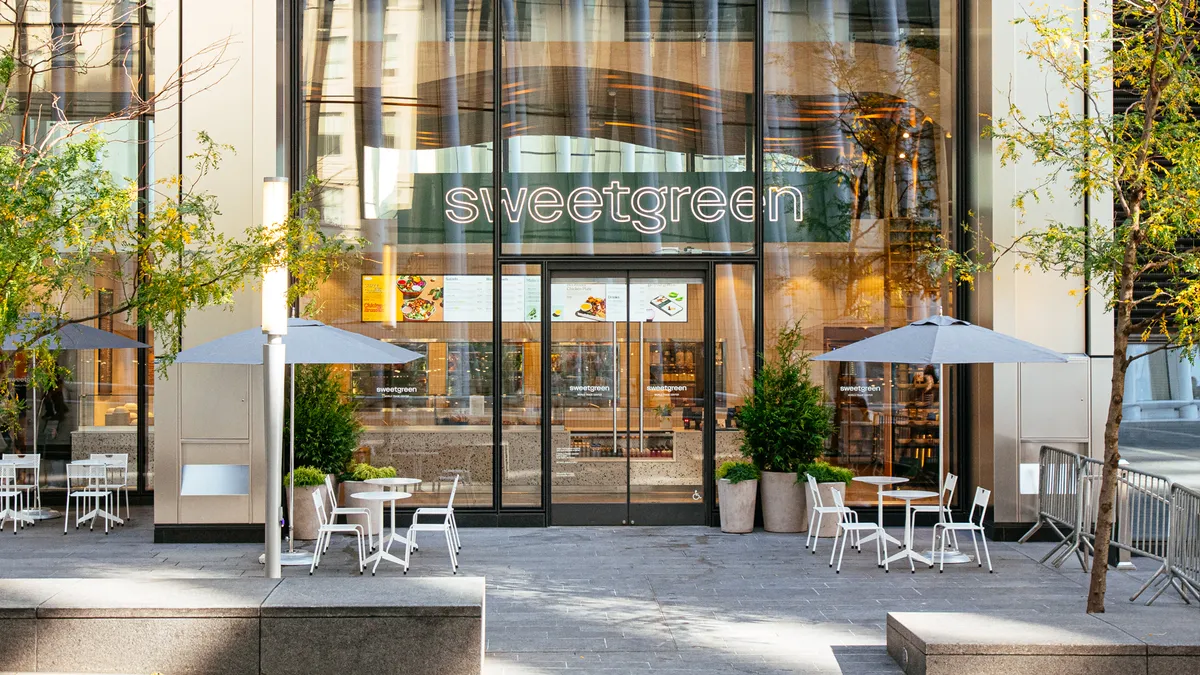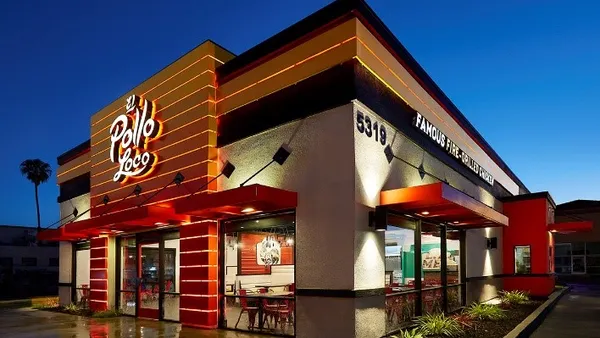Dive Brief:
- Sweetgreen begins trading its stock on Thursday with an IPO price per share of $28, according to a press release. The company is selling 13 million shares of Class A common stock, which will net $364 million.
- Stocks will be traded under the symbol "SG" on the New York Stock Exchange and the offering is expected to close on Nov. 22.
- Sweetgreen, which is expected to be valued at nearly $3 billion, becomes the fifth restaurant company to begin trading on the NYSE this year, and will soon be followed by Panera Brands and Fogo De Chao, both of which have submitted initial registration forms with the U.S. Securities and Exchange Commission to go public.
Dive Insight:
Sweetgreen's biggest hurdle as a freshly minted public company will be showing it is on a path to profitability. Soon after it filed its initial S-1, Axios reported the fast casual chain has been struggling in the net loss category for the last five years — counter to CEO and Co-founder Jonathan Neman's claims that Sweetgreen is profitable. The company's net losses reached a high of $141.2 million in 2020, an increase of 107.9% compared to its losses in 2019. Its adjusted EBITDA margin fell to negative 49% in 2020 compared to negative 17% in 2019.
Sweetgreen explained in its S-1 filing that the 2018 comments made by Neman were actually referring to operating profitability for the third quarter of fiscal 2018 rather than net income under GAAP requirements. It also stated that when it was quoted in the New York Times as having revenue that topped $300 million for fiscal year 2019, that the quote didn't precisely reflect its revenues, which were actually $274 million for the year.
"Potential investors in this offering should not rely on these prior public statements," the company said.
Sweetgreen's restaurant-level margins have been historically profitable and reached 16% in 2019, but that dropped to negative 4% in 2020. The company's restaurant-level margins have already bounced back, however, reaching 12% as of Sept. 26 year-to-date. Its average unit volumes also are at $2.5 million, which is in line with other fast casual chains like Chipotle.
Sweetgreen plans to reach AUVs of $2.8 million to $3 million as a public company, with restaurant-level profit margins of 18% to 20%, according to the filing. These goals will likely be reached through its prior investments in technology, which the company said is part of its path toward profitability.
"We have not achieved profitability in any fiscal period, in large part because we have consciously invested in our operating and technology foundation," the company said. "We believe this foundation has positioned us to achieve the above growth strategies, while also implementing restaurant-level efficiencies (such as enhanced labor management, automation, and optimal store layouts) and economies of scale in our supply chain."
Sweetgreen's acquisition of Spyce, a restaurant company that uses automated kitchens, is expected to allow Sweetgreen to improve capacity and throughput, which will improve restaurant-level margins, the company said. It is also working to double its footprint, a move that will help the chain expand its customer reach and likely boost revenue.
Profitability may not be a key concern for shareholders, at least in the short-term. DoorDash, for example, launched its IPO at the end of 2020 even though it reported net losses of $667 million for 2019 and a loss of $149 million for the first nine months of 2020. DoorDash initially priced its IPO at $102 per share, but during day one trading, it reached $182 per share. The company's stock traded at nearly $230 per share on Nov. 17.














